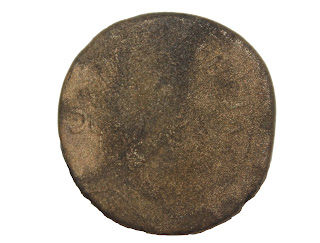How much do you know about the Roman religion? The Romans worshipped many gods, and they were part of their lives every single day. It seems that the Roman gods are everywhere and on everything at times. Coins, pottery, figurines, and more constantly depict the gods in all of their glory. However, there are more to the gods than we realise.
 |
| Roman Religion handling table at the Roman Baths |
Who are the major gods?

Venus with an apple (l) and Venus Victory (r)
Which gods were worshipped at the Roman Baths?
Sulis
Minerva is the main goddess worshipped at the Roman Baths, but she is not the
only one. Others worshipped here include Diana, Jupiter, Mercury, and Mars.
Jupiter is on an altar in the Temple Courtyard, and we can also see him on
coins and pottery. On a coin, Jupiter is seated holding Winged Victory and, on
a piece of pottery, his arm is flexed to throw his thunderbolt. Even though
this site is dedicated to Sulis Minerva, it does not mean that we cannot see
other gods represented at this same location.
Jupiter holding Winged Victory (l) and Jupiter’s hand on thunderbolt from the altar in the Temple Courtyard (r)
Who are the minor gods?
The minor gods are not as well known by the general public and are personifications of virtues that the Romans promoted and tried to follow. One coin that shows this depicts Libertas, goddess of liberty. On the reverse of the coin, we see Libertas holding a soft pileus (a hat that freed slaves wore) and a sceptre. The pileus on the coin symbolises freedom for freed slaves which was a common virtue to put on a coin. Libertas is one of many smaller gods who represent Roman virtues.
 |
| Libertas holding pileus and sceptre |
Take a look
at your money today! Do you see symbols or themes represented on your coins?
Samantha
Kestler
Collections
Placement (MA Museum Studies)







































